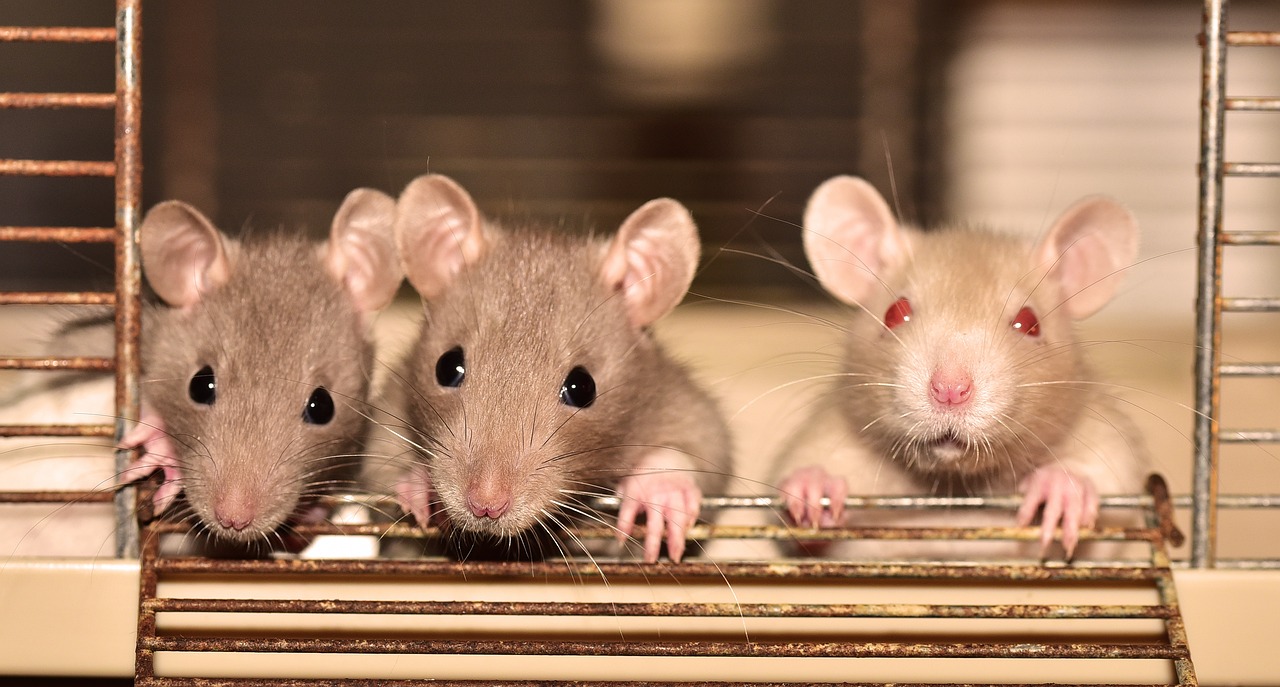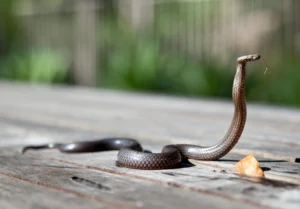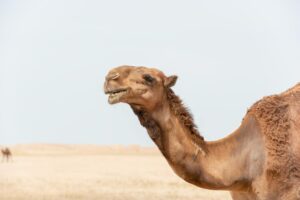What are the reasons for the significant increase in the number of rodents?

Scientists in recent studies have confirmed that the number of rodents around the world is increasing due to climate change and global warming, resulting in longer-than-usual warm seasons.
These animals are originally known for their high reproductive capacity and for giving birth to large numbers in a short time.
Scientists in recent studies have confirmed that the number of rodents around the world is increasing due to climate change and global warming, resulting in longer-than-usual warm seasons.
These animals are originally known for their high reproductive capacity and for giving birth to large numbers in a short time.
And the increase in their numbers over time could have negative repercussions on the future of our health and the balance of the natural system.
For decades, humans have relied on various methods to eliminate rodents, especially rats and mice, particularly during outbreaks of diseases and plagues like the Black Death. However, the ability of these animals to reproduce quickly and adapt to environmental conditions has prevented a definitive and conclusive solution.
In any case, the world should not be devoid of rodents, including mice and rats, because, like other animals, their presence contributes to maintaining balance, while their extinction or significant increase in number harms the ecosystem.
What is the relationship between climate change and the increase in the number of rodents?
Rodents breed in the warm seasons and usually hibernate during the cold seasons. But with climate change and rising temperatures, these mammals will find suitable conditions for reproduction.
Scientists have observed this relationship in multiple studies and in different countries.
In June 2022, Euronews published an investigation about the increase in the number of a type of mouse (the white-footed mouse) in the United States.
The report indicated that the companies responsible for pest control in homes received a large number of complaints about the presence of mice during the winter season, which is unusual.
Complaints about the increasing number of mice and rats in Paris have also multiplied recently, and many videos shared on social media during the Olympics showed a notable spread of rats, some of which were large in size.
But the fame of the rats in the Parisian capital is old. And the magazine “Le Parisien” wrote in June 2020 about the contribution of climate change to their increase in number and size.
In 2022, the Canadian Pest Control Center published an investigation about the potential increase in the number of rats in Canada as climate change continues.
Scientists point to these animals’ high ability to adapt to geographical and climatic changes.
But climate change is not the only reason for the proliferation of rodents. As the wildlife researcher Shadi Andari tells BBC News Arabic, human activity significantly contributes to this imbalance.
Andari, who has years of experience in the field of caring for mammals and birds, points out that random human urban and agricultural activities, in addition to the killing and hunting of animals that are the main food source for rodents, also contribute to the increase in the number of rats, mice, and other rodents in agricultural fields.
How do rats and mice reproduce?

Rodents are characterized by their short life cycles, but they are very active in terms of reproduction, with their numbers estimated in the billions worldwide.
A female rat can give birth to 6 to 12 baby rats six times a year, meaning that a single female could be responsible for giving birth to between 36 and 72 rats each year.
- The breeding phase in rats begins three months after their birth.
- The female rat can mate two days after giving birth.
- The gestation period for rats is 21 days.
- Rats can live up to three years.
Mice belong to the same family as rats but are smaller in size. - The gestation period for a female mouse ranges from 19 to 21 days. And she can give birth to 10 to 12 mice.
- She can mate again 24 hours after giving birth. She lives for up to a year and a half.
- The number of times a female mouse can conceive and give birth can reach up to 15 times a year.
How will its proliferation affect our lives?
The greatest danger related to the reproduction of rodents, especially mice and rats, affects our food security.
The fields of wheat, corn, grains, fruit trees, and vegetables are our primary source of food, as well as for rodents.
And not combating it in the places where food sources are produced means causing harm to the crops.
While these small mammals cause less damage to food in cities, as they generally feed on waste. But these animals are famous for transmitting and spreading diseases and epidemics, although the journal “Nature Ecology and Evolution,” which specializes in environmental issues, published an investigation suggesting that the rodents living in the city may not cause the transmission of deadly epidemics. And that birds like pigeons pose a greater risk when it comes to transmitting and spreading diseases.
Rodents in some cities damage the infrastructure network, which serves as a safe haven and a passage for movement, destroying anything that obstructs their path in search of food.
Humans vs. Rodents: A Centuries-Old War
Humans have tried various methods to eliminate these mammals in homes, streets, and fields.
And humans used pesticides and toxins in cities and in fields.
But these means, as Shadi Andari mentioned, could harm not only the land and soil but also other wild animals.
And this is what the website “raptors are the solution” confirmed in the United States, pointing to the harm these substances cause to the lives of birds.
Humans have relied on domestic cats, which have proven effective to this day in many experiments. Cats are credited with playing an important role in saving European cities like Venice from the plague by killing rats in the 14th century.
It is said that the papal decree issued by Pope Gregory IX at that time, which considered cats to be demonic creatures and called for their killing and removal, contributed to the spread of more rats and mice and consequently the plague.
Humans domesticated some types of pet dogs—most of them small to medium-sized—and trained them to chase and kill rats and mice.
But there are other experiments that rely on nature to get rid of rodents, which means depending on wild mammals and birds that hunt rodents.
Enemies of rodents, friends of the farmer

Wildlife specialist Shadi Andari was inspired by the impact of climate change on one hand and the negative effects of human activity on the other to think of a long-term project aimed at protecting resident birds and mammals that prey on rodents in the areas surrounding the Tannourine Cedar Forest Nature Reserve (Northern Lebanon).
Andari says that random hunting and false beliefs have contributed to the killing of predatory birds and snakes, which help reduce the number of rodents and thus protect agricultural crops.
Through his visits to the area, Andari listened to the complaints of the affected farmers.
The region of Tannourine is famous for its orchards, particularly those abundant in apple trees, with a few grain fields. Rodents are considered one of the most significant pests that attack trees and other crops.
The project study was initiated to transform it into a joint effort implemented by the “Tannour Environmental Association” in Tannourine, in partnership with the “Association for the Protection of Birds in Lebanon (ABCL),” and funded by the Small Grants Program—Global Environment Facility/United Nations Development Programme.
In his study, Indari relied on similar projects implemented in other countries like Chile, but he primarily based it on the fact that the decrease in the number of birds of prey and snakes must have contributed to the increase in the rodent population. And that the presence of natural rodent enemies may help get rid of them.
He says that the project is long-term, and it is too early to draw conclusions, but he hopes to reach a survey by the end of the year, showing numbers related to the number of rodents and their impact or lack thereof, in the presence of their natural enemies.
However, Andari confirms that these methods are less costly for farmers and less harmful to the soil and wildlife compared to the use of chemical pesticides.
Study and monitoring of rodents and their enemies
The team had to conduct numerous theoretical and field studies that included:
Evaluation of resident bird species (diurnal and nocturnal) that hunt rodents. The team studies the distribution, feeding habits, and threats facing diurnal raptor species, which include three types (eagles, buzzards, and hawks). And the night owls (4 types of owls)
The team conducts regular daytime and nighttime visits to the area and records data related to these birds (species, breeding, behavior, etc.). The regurgitated remains of bones and fur are also collected to determine the diet of the raptor.
Assessment of rodent-eating mammal species: Understanding the distribution of carnivorous mammals (wolf, jackal, hyena) and their dietary habits, and evaluating existing threats. The team deployed two sets of motion-activated cameras. Three of them are fixed within the reserve, and three change their locations once a month to cover different sites.
The goal of documentation is also to show the interaction and importance of wildlife to the farmer in the context of rodent control
Rodent species assessment: The project team studies the types and numbers of rodents by using special live traps periodically at various locations. This study serves as a fundamental reference for later comparison and for monitoring changes in the numbers and spread of rodents.
Securing and protecting the habitat of rodent enemies
The plan also includes awareness campaigns and workshops to educate locals, including farmers, residents, students, fishing enthusiasts, and herders. And involving the residents in initiatives within the project and informing them of the results of scientific studies.




